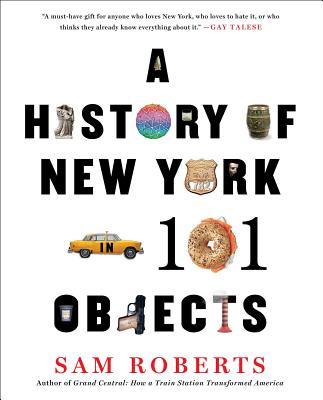
-Beads from the African Burial Ground, 1700s. Slavery was legal in New York until 1827, although many free blacks lived in the city. The African Burial Ground closed in 1792 and was only recently rediscovered.
-The bagel, early 1900s. The quintessential and undisputed New York food (excepting perhaps the pizza).
-The Automat vending machine, 1912. Put a nickel in the slot and get a cup of coffee or a piece of pie. It was the early twentieth century version of fast food.
-The "I Love NY" logo designed by Milton Glaser in 1977 for a campaign to increase tourism. Along with Saul Steinberg's famous New Yorker cover depicting a New Yorker's view of the world, it was perhaps the most famous and most frequently reproduced graphic symbol of the time. Unique, sometimes whimsical, always important, A History of New York in 101 Objects is a beautiful chronicle of the remarkable history of the Big Apple. "The story [Sam Roberts] is telling is that of New York, and he nails it" (Daily News, New York).
-Beads from the African Burial Ground, 1700s. Slavery was legal in New York until 1827, although many free blacks lived in the city. The African Burial Ground closed in 1792 and was only recently rediscovered.
-The bagel, early 1900s. The quintessential and undisputed New York food (excepting perhaps the pizza).
-The Automat vending machine, 1912. Put a nickel in the slot and get a cup of coffee or a piece of pie. It was the early twentieth century version of fast food.
-The "I Love NY" logo designed by Milton Glaser in 1977 for a campaign to increase tourism. Along with Saul Steinberg's famous New Yorker cover depicting a New Yorker's view of the world, it was perhaps the most famous and most frequently reproduced graphic symbol of the time. Unique, sometimes whimsical, always important, A History of New York in 101 Objects is a beautiful chronicle of the remarkable history of the Big Apple. "The story [Sam Roberts] is telling is that of New York, and he nails it" (Daily News, New York).
Paperback
$22.00